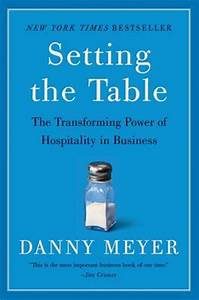Many services make big mistakes when they attempt to brand themselves, especially when they try to impose product-branding protocols on their identities. We’ve written in the past about How to think about branding healthcare services. While the branding process is the same—discovery insights about customers and completion, brand strategy development, and the fielding of visual and verbal branded assets, such as logos, typography, color, and iconography—there are many considerations that are unique to service branding one must consider. Here are the key five:
- Brand Experience: This could be a topic all its own, so forgive the brief definition of brand experience as the way customers encounter a brand in person, online, on the shelf, on the phone, etc. Many articles consider services brands as being intangible vs. product brands (i.e. you can’t drink a yoga studio or hold a package delivery service in the palm of your hand), but their view is simply not the case.
 Of course, there are tangible assets. Take hotels as an example: you can sleep in the beds, you can sit in the lobby, you can buy branded items in the gift shop, you can smell the environment (think fresh flowers), and so on. The primary difference in brand experience for services vs. products is that you consume them in a more empirical way. That is, the experience manifests itself as a three-dimensional world rather than merely as a series of one-dimensional encounters. You cannot walk into a Yelp store; you cannot disengage from dealing with others in an app, on the phone, online or in person. And speaking of people…
Of course, there are tangible assets. Take hotels as an example: you can sleep in the beds, you can sit in the lobby, you can buy branded items in the gift shop, you can smell the environment (think fresh flowers), and so on. The primary difference in brand experience for services vs. products is that you consume them in a more empirical way. That is, the experience manifests itself as a three-dimensional world rather than merely as a series of one-dimensional encounters. You cannot walk into a Yelp store; you cannot disengage from dealing with others in an app, on the phone, online or in person. And speaking of people… - People: Whereas consistency of a product brand is relatively easy to achieve (a tablet of Advil is the same in California as it is in Alabama), consistency of service depends on the unique encounters you have with people of different intelligence, personality, and manners. And though service brands try very hard to create a universal integrity to their brand experience, the basic dynamics of human interaction guarantee that the brand will behave differently. Take a chain of walk-in medical clinics: customers will encounter a different greeter from franchise to franchise, a different doctor, a different way of having a conversation about one’s condition. The outcome may even be different. That is, one may receive a different antibiotic, for example, for the same type of infection depending on the franchise.
- Geography: There are certain service brands that do possess, to one degree or another, a national or international presence from one geography to the next. Federal Express and Starbucks come to mind. But consider a dry cleaning service: you go to the one in your neighborhood rather than any other location. True, there are some service identities that are “destination” brands. That is, people will commute great distances to avail themselves of a brand of service they feel they cannot get anywhere else.
 Memorial Sloan Kettering is such a destination brand, as is the food meccas of The French Laundry and Per Se—both operated by the renowned chef, Thomas Keller. But a rug cleaning service or a dog-grooming business? They are brands that are mitigated by geography and must cultivate a following through means other than mass media, such as word of mouth or local print and radio.
Memorial Sloan Kettering is such a destination brand, as is the food meccas of The French Laundry and Per Se—both operated by the renowned chef, Thomas Keller. But a rug cleaning service or a dog-grooming business? They are brands that are mitigated by geography and must cultivate a following through means other than mass media, such as word of mouth or local print and radio. - Frequency: Another key difference between service branding and product branding is how often one uses them. For medications, it is very common to be taking a pill a day for a chronic ailment. Or what about the many devotees who cannot do without a Diet Coke several times a day (Diet Coke is the second leading soft drink right after its sibling brand, Coca-Cola). Not so for many service brands. Does one go to a hotel everyday? Or a hospital? Or even to a package delivery service? A few outliers may be ride-sharing services, which have become as ubiquitous as any product brand. According to Fortune Magazine, Uber has 40 million riders a month. But in New York City, even that number is not even close to the 7.6 million riders per day that use the transportation service of the New York City subways (that’s nearly six times the volume).
 Another is any news service brand like Reuters or the Associated Press. And of course, telephone and data services are the daily backbone of all people’s lives. However, those service brands that have an infrequent number of brand encounters make them vulnerable to alienating customers with only a single mistake or two. You may get a bad tube of toothpaste one time, but it won’t likely interfere with brand loyalty. But imagine a bad hospital experience or a bad massage—that could easily destroy a service brand identity in the minds of customers.
Another is any news service brand like Reuters or the Associated Press. And of course, telephone and data services are the daily backbone of all people’s lives. However, those service brands that have an infrequent number of brand encounters make them vulnerable to alienating customers with only a single mistake or two. You may get a bad tube of toothpaste one time, but it won’t likely interfere with brand loyalty. But imagine a bad hospital experience or a bad massage—that could easily destroy a service brand identity in the minds of customers. - No patent protection: By their very nature, service brands are almost always commodity businesses. That is, there is no real distinguishing characteristic other than the essential one of good customer service. Drugs, soaps and other product goods are protected by patents that ensure no other product can be exactly the same. But yoga studios cannot patent the exercise, attorneys cannot patent how they practice the law, and restaurants cannot patent their entrées no matter how hard they try. And speaking of restaurants, one genius entrepreneur, Danny Meyer, of Shake Shack fame and the flagship operations of Gramercy Tavern and Union Square Café in New York City realized that the one unique ingredient in all of his restaurants is what he calls “hospitality.” He even wrote a book about how hospitality can guide any service brand to excellence.
 It’s called Setting the Table, and if you own a service brand, you owe yourself a copy ASAP. Mr. Meyer has his top restaurants record the birthdays of every guest who celebrates them in his establishments. He notes which items on the menu please particular guests. And these are only two of the ways he tries to overcome the absence of a patent on customer service that is endemic to the category.
It’s called Setting the Table, and if you own a service brand, you owe yourself a copy ASAP. Mr. Meyer has his top restaurants record the birthdays of every guest who celebrates them in his establishments. He notes which items on the menu please particular guests. And these are only two of the ways he tries to overcome the absence of a patent on customer service that is endemic to the category.
So if you manage—or are considering managing—a service brand, don’t fail to recognize the unique ways that service identities are created and protected from the many differences outlined above. And as for any branding advice, please consider me at your service.
